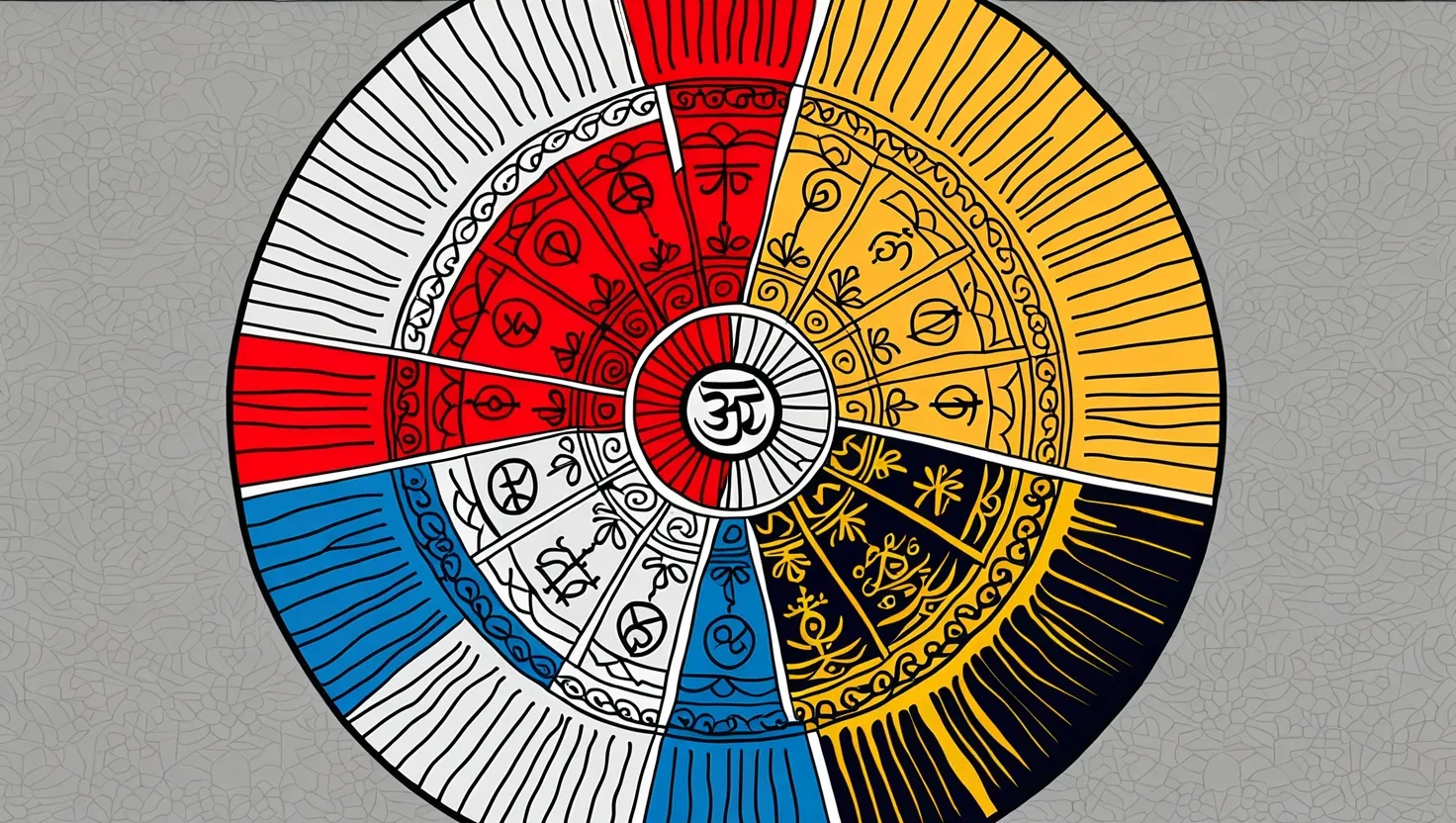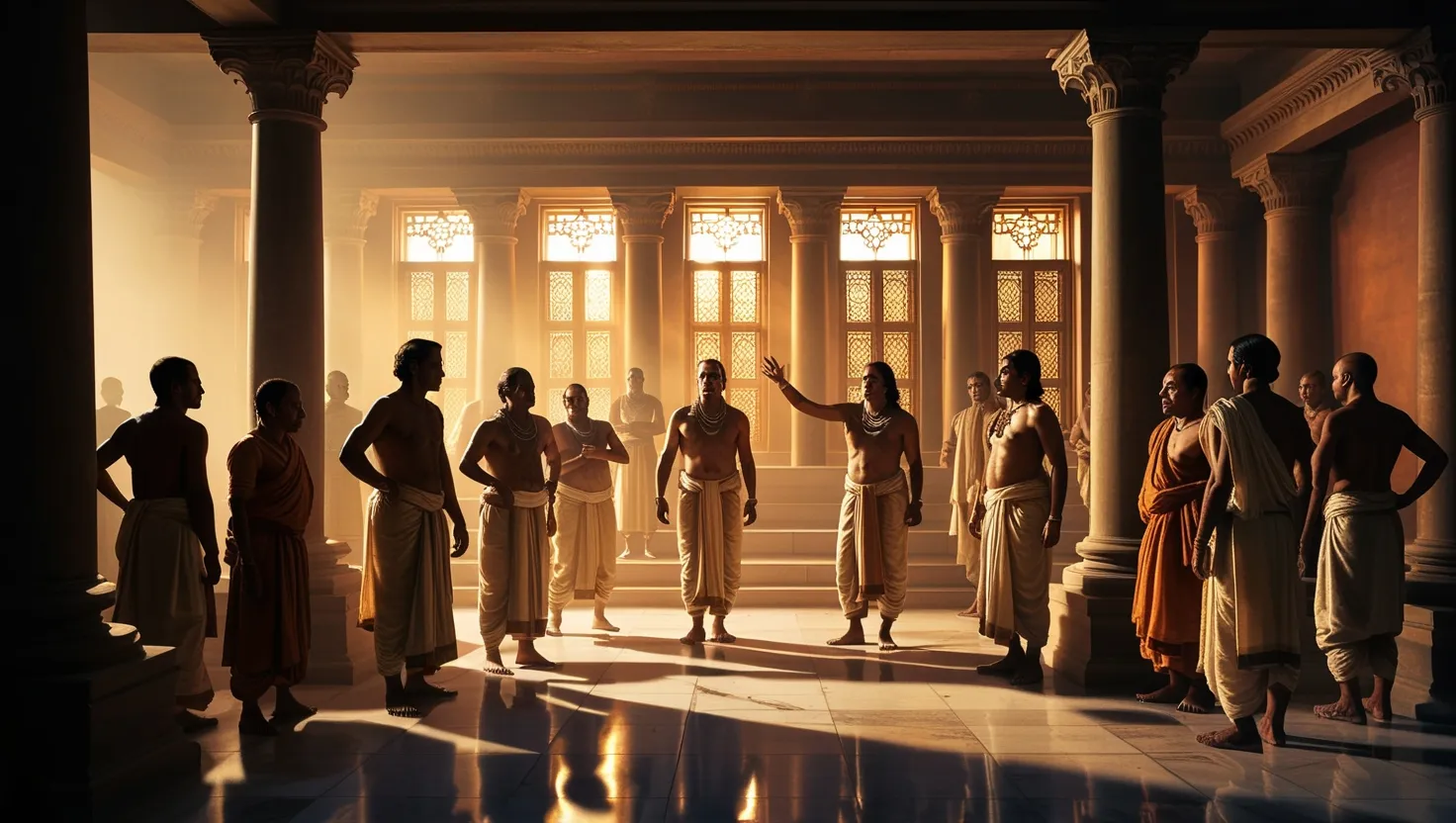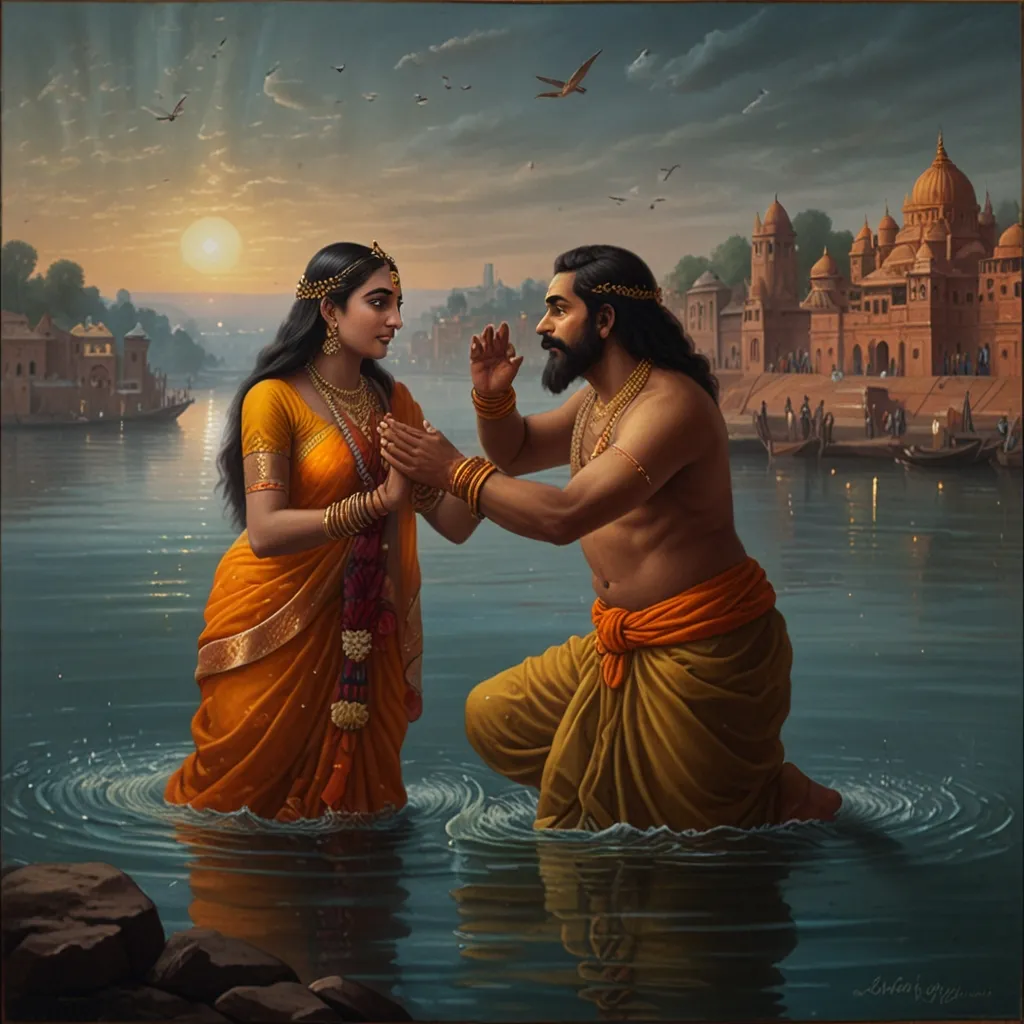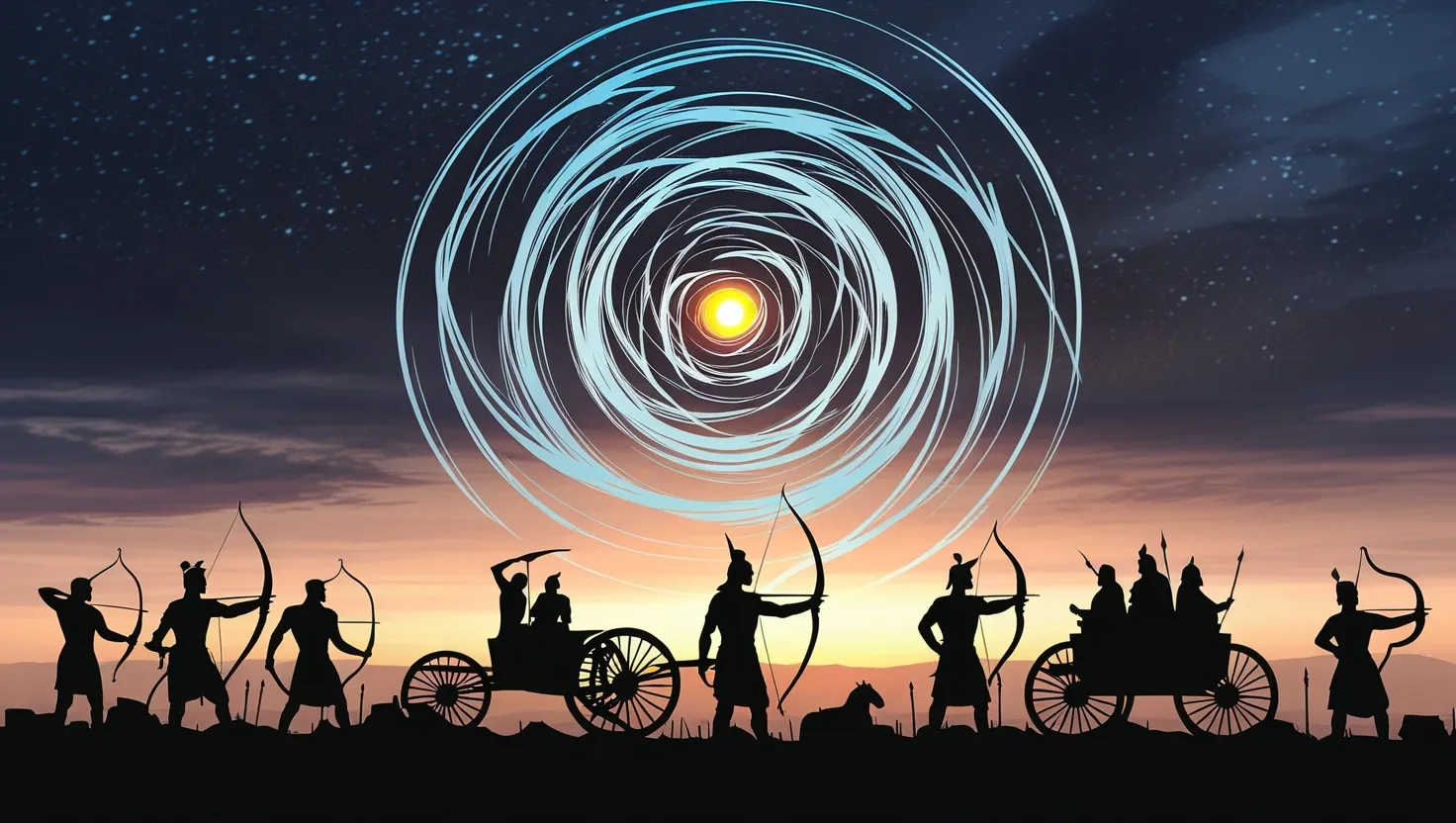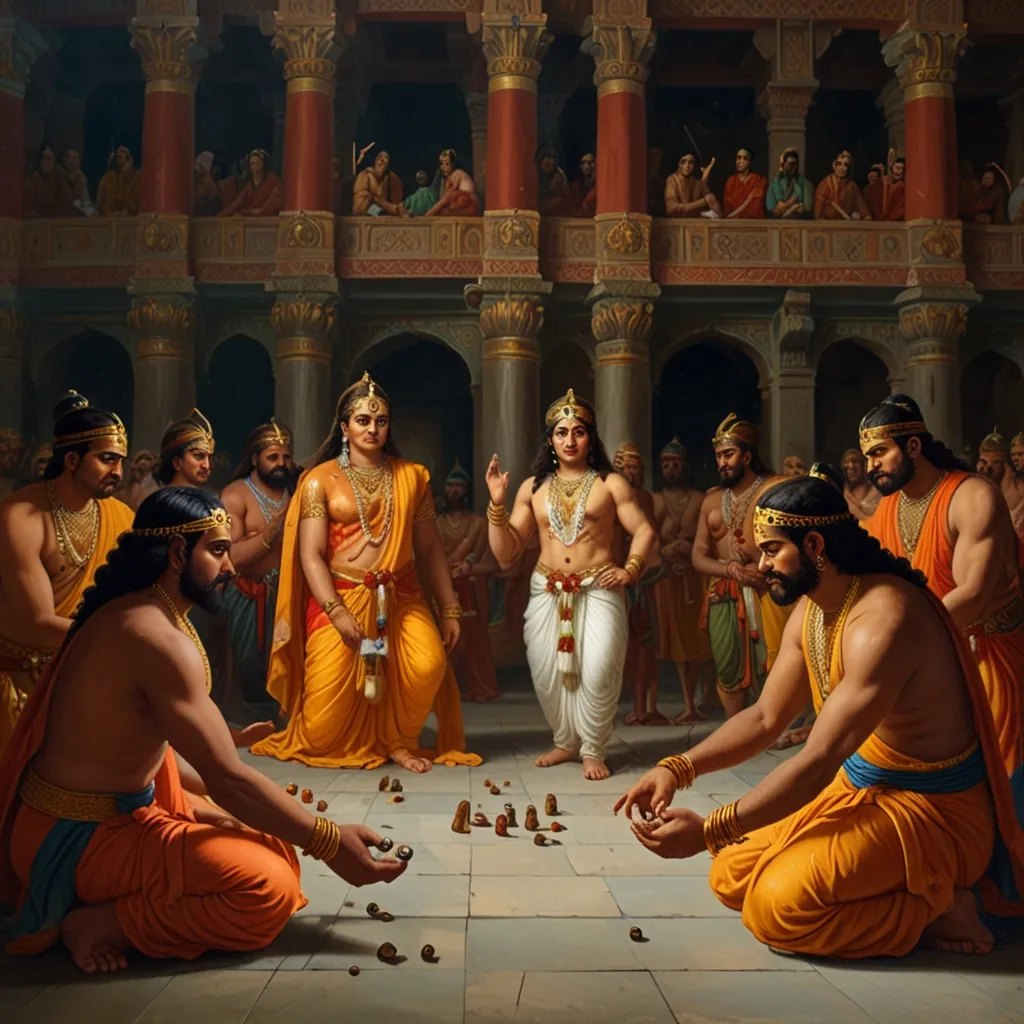In the vast and intricate landscape of Hinduism, the concept of Varna stands out as a multifaceted and deeply symbolic system that extends far beyond its common association with social classes. To truly understand Varna, we must delve into its roots in Vedic symbolism, where color is not just a visual attribute but a powerful tool for spiritual insight and personal growth.
The term “Varna” itself means “color” in Sanskrit, but this color is not merely a physical property; it is a classifier that encapsulates various aspects of human existence. In the ancient texts, such as the Rig Veda, the creation hymn describes the origin of the four Varnas from the body of the primordial being, Purusha. Here, Brahmins emerged from the mouth, Kshatriyas from the arms, Vaishyas from the thighs, and Shudras from the feet. This mythological narrative is often seen as a metaphor for the different roles and responsibilities within society.
However, the concept of Varna is more nuanced than a simple division of labor. It is intertwined with the elements, deities, and states of consciousness in Vedic thought. For instance, each Varna is associated with specific colors: Brahmins with white, Kshatriyas with red, Vaishyas with yellow, and Shudras with black. These colors are not just arbitrary; they represent different energies and qualities. White symbolizes purity and knowledge, red signifies courage and strength, yellow represents productivity and prosperity, and black embodies service and humility.
In rituals and meditation practices, these colors play a significant role. For example, in certain rituals, the use of white flowers or white clothing is meant to invoke purity and spiritual growth. Red is often associated with the goddess Durga, symbolizing her fierce protection and strength. Yellow, linked to the sun, represents illumination and wisdom. Black, though often misunderstood as negative, signifies the earth and the grounding energy that connects us to our roots.
The Mahabharata, one of the epic texts of Hinduism, offers a more behavioral model of Varna. Here, individuals are classified based on their inclinations and actions rather than birth. Those inclined to anger, pleasures, and boldness are seen as Kshatriyas; those who are fond of cattle rearing and living off the plough are Vaishyas; and those who are fond of violence, covetousness, and impurity are Shudras. Brahmins, on the other hand, are dedicated to truth, austerity, and pure conduct. This model suggests that Varna is not fixed by birth but can be determined by one’s nature and actions.
The relationship between Varna and the elements is another fascinating aspect. Each Varna is associated with specific elements: Brahmins with the ether (space), Kshatriyas with fire, Vaishyas with earth, and Shudras with water. These elemental associations reflect the different roles these classes play in maintaining the balance of society. Brahmins, associated with the ether, are the guardians of knowledge and spiritual practices. Kshatriyas, linked to fire, are the protectors and warriors. Vaishyas, connected to the earth, are the producers and cultivators. Shudras, associated with water, are the servants and caretakers.
In Vedic thought, Varna also relates to states of consciousness. The four Varnas are seen as corresponding to different levels of awareness. Brahmins represent the highest state of consciousness, focused on spiritual growth and self-realization. Kshatriyas embody the active and courageous state, ready to protect and serve. Vaishyas symbolize the productive and creative state, engaged in agriculture and trade. Shudras represent the foundational and supportive state, ensuring the smooth functioning of society through their service.
The Puranas, another set of ancient texts, further elaborate on the significance of Varna. For example, the Brahma Purana states that acting against one’s Varna and ashrama (stage of life) leads to spiritual decline. This emphasizes the importance of adhering to one’s duties and responsibilities as defined by their Varna.
In modern times, the concept of Varna has evolved, and its rigid social implications have been largely criticized. However, its symbolic and spiritual significance remains profound. By understanding Varna as a system of energies and qualities rather than just social categories, we can gain fresh perspectives on the nature of reality and our place within it.
For spiritual seekers, the concept of Varna offers practical wisdom for harmonizing our lives with cosmic rhythms. It suggests that our actions and inclinations can align us with different energies and qualities, leading to a more balanced and fulfilling life. Whether you are an artist looking for inspiration or simply curious about different approaches to understanding the world, the concept of Varna promises to add new hues to your palette of knowledge.
In essence, Varna is not just a social classification but a vibrant palette of colors, each representing different aspects of human existence. It is a tool for spiritual insight, a guide for personal growth, and a lens through which we can understand the subtle energies that color our existence. By exploring this concept deeply, we can see the world as a canvas of divine expression, where every color, every energy, and every action has a profound significance.
